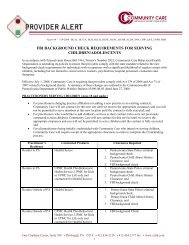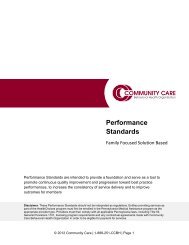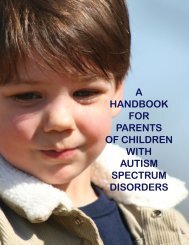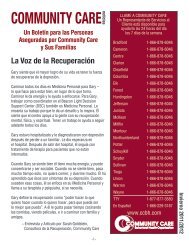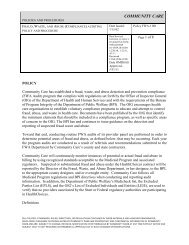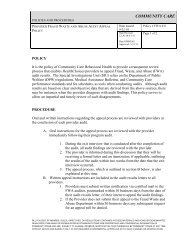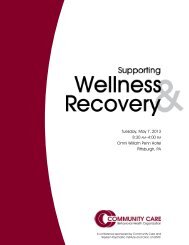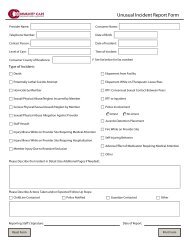Billing Manual for Community Care Network Providers
Billing Manual for Community Care Network Providers
Billing Manual for Community Care Network Providers
You also want an ePaper? Increase the reach of your titles
YUMPU automatically turns print PDFs into web optimized ePapers that Google loves.
When a provider bills <strong>for</strong> the provision of a service that did not meet the servicedefinitions, per<strong>for</strong>mance specifications, state or federal regulations, oraccreditation standards customarily recognized in behavioral health care.Inappropriate or frequent referrals that may constitute a conflict of interest.<strong>Care</strong> authorizations to providers who may have personal or other financialrelationships with care managers.Other related claims or care management issues that may involve intentionaldeception or misrepresentation as referenced above.Abuse is defined by the BPI as “any practices that are inconsistent with sound fiscal,business, or medical practices, and result in unnecessary cost to the Medicaid Program,or in reimbursement <strong>for</strong> services that are not medically necessary or that fail to meetprofessionally recognized standards or contractual obligations (including the terms ofthe [HealthChoices] RFP, Agreement and the requirements of the state or federalregulations) <strong>for</strong> health care in a managed care setting.” It also includes recipientpractices that result in unnecessary cost to the Medicaid Program.<strong>Community</strong> <strong>Care</strong> works collaboratively and cooperates fully with all oversight entities,counties, and regulatory agencies including, but not limited to, the BPI, the Office of theAttorney General’s Medicaid Fraud Control Section, the U.S. Justice Department, theCenter <strong>for</strong> Medicare and Medicaid Services, and the Pennsylvania Office of InspectorGeneral.Procedures <strong>for</strong> Monitoring the Provider <strong>Network</strong> <strong>for</strong> Fraud, Waste, or AbuseThe Fraud, Waste, and Abuse Department utilizes a number of methodologies in orderto detect fraud, waste, and abuse. The initiatives include, but are not limited to:Conducting routine provider chart reviews.Data analysis of provider billing in<strong>for</strong>mation, including comparing historical trends ofpeer and best practice thresholds.Cooperation and collaboration between the Provider Reimbursement and FWADepartments in order to be proactive in detecting or preventing FWA.Review and testing of edits that are in place within the claims system to preventduplicate payments or payments without authorizations.Investigation of all referrals including those submitted through the FWA Hotline andthe FWA e-mail account.Cooperation and collaboration with external investigators including the BPI, CMS,Medi-Medi, or other law en<strong>for</strong>cement agencies.The auditing process <strong>for</strong> routine audits is outlined below.a. The provider will receive a notification letter and a telephone call in<strong>for</strong>ming him orher that the provider has been selected <strong>for</strong> an audit. The provider is either given theexact date and start time of the on-site audit, or they receive a request <strong>for</strong> membercharts to be sent to <strong>Community</strong> <strong>Care</strong> <strong>for</strong> a desk audit.<strong>Community</strong> <strong>Care</strong> Provider <strong>Manual</strong> | 1-888-251-CCBH | © 2012 All Rights Reserved | Page 127



